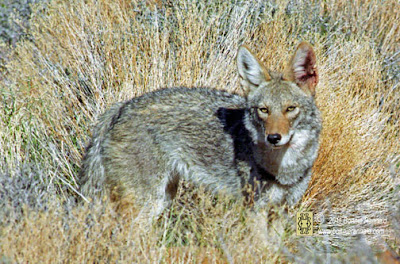Part III, Flora and Fauna of Red Rock Canyon
Part I focused on an overview of Red Rock Canyon's inception from being under an ancient sea 600 million years ago to its present day Mojave Desert landscape. Part II explored Red Rock's aquifers with their unique micro-climates that contribute to and provide sustenance for a large variety of plants and animals that make their home in the Mojave Desert.
Part III combines Red Rock Canyon's topography with the micro-climates and the flora and fauna that are able to co-exist in the desert landscape.
Viewing Red Rock Canyon from the overlook gives the impression that you are about to enter a very unique environment with huge colorful Aztec Sandstone formations and strange shaped trees set against the deep blue sky. The trees are named Joshua Trees by the Mormon settlers for the Biblical Joshua and are native to the Mojave Desert, surviving for up to 200 years of age.
Joshua Trees provide shelter and habitats for many of the desert dwellers including the Cactus Wren that weaves her protective nest of grass safely within the sharp prongs, the Desert Tortoise that may dig shallow burrows in the sandy soil and the blacktail jack rabbit that escapes the desert heat in its shade.
Looking out at the desert floor, one might conclude that the soil is lifeless and uninhabitable, however the soil is full of microorganisms or Biological Crusts that are a vital part of the desert ecosystems. The more available water allows for a larger diversity in plants and animals supported by that ecosystem. A symbiotic relationship exists between the land, water, plants and animals because in the desert all things are interconnected and interdependent. In the spring and early summer, Evening Primrose grows profusely accenting the reddish sandy soil with white flowers at Calico Basin.
So many of the mammals in Red Rock Canyon area are nocturnal to avoid the strong daytime sun, however the antelope ground squirrel can be seen running across the desert soil at the hottest time of the day. To cool off, this rodent will flatten its body against the soil in a shaded area. Water lose is replenished by drinking early morning dew and feeding on green plants.
The desert is often thought to be dry and without water, but in many of the sandstone layers there are natural tinajas or catchments that hold water from rain or snowmelt. Calico Basin Tank has water most of the year, providing a habitat for many different desert creatures including small insects, insect larvae and fairy shrimp. On a nearby rock a Collard Lizard waits for an insect and sometimes it is even possible to spot a Desert Bighorn Sheep on one of the steep rocky slopes coming down for an occasional drink.
The seasonal rains and snow storms bring an abundance of wildflowers to the canyons, desert floor and stream beds. Some seeds remain dormant for up to 10 years before there is adequate precipitation to bring them to life.
Redbud trees put on a visual display in the spring and may reach from 15 feet (4.6m) to 25 feet (7.62m), attracting butterflies and hummingbirds to the sweet nectar.
Springs flowing through the canyons of Red Rock provide micro-climates that promote lush vegetation. Petroglyphs are found near where there is water and were once the camping sites of prehistoric people. It is believed that the Anasazi hunted and gathered foods from the Red Rock Canyon Area.
In the shade by the stream at Pine Creek, North America's smallest hummingbird, the Calliope has built her nest on the branch of a willow. A Gambel's Quail calls from the top branches of a Honey Mesquite tree while a brilliant blue Scrub Jay looks for seeds and berries on the ground below.
The harsh desert which goes from extremely high temperatures in the summer to freezing periods in the winter supports such a diverse ecosystem for its flora and fauna.
Gazing out across the landscape where I have spent so much time, I am always filled with a profound sense of awe for the fragile and delicate ecosystems that thrive and adapt in such harsh conditions.
For More Information:
Desert Tortoise
Desert Bighorn Sheep
Desert Plants
Desert Soil
Hummingbirds
What
an exciting and interesting photo-adventure this day has been. I love
it when I am drawn to an area and not knowing what to expect I get
treated to new experiences.
Sign up and follow my blog to see where my next photo-adventure will be!
Photography places me in the moment where I can share that moment in time. It becomes a life story as represented by my interaction with the scene. The happiness and beauty or the sorrow and strife; how I focus leaves a lasting impression that might touch the viewer on a spiritual level.
"Reflecting Nature's Artistry"
No images on this blog are within Public Domain or are available for free download.
All rights reserved, world-wide and images protected by Digital
Millennium Copyright Act (DMCA). All photography, graphics, text,
design, and content is copyrighted by Bonnie Rannald and should not be
copied, down-loaded, transferred and re-created in any way without the
express consent, in writing to Bonnie Rannald.
For information on Bonnie Rannald licensed, right-managed images, please
submit a written request.












Amazing Blog !
ReplyDelete